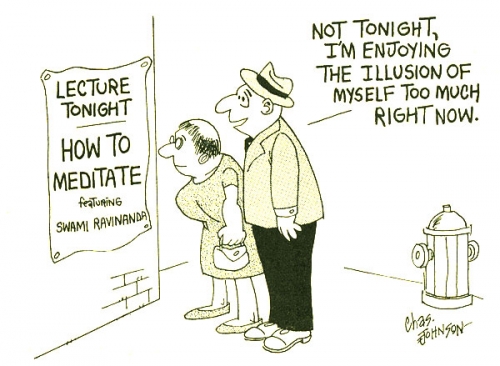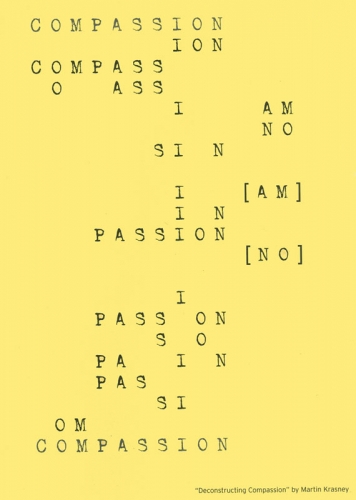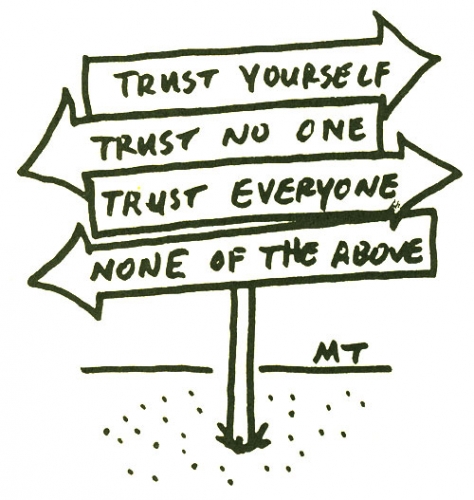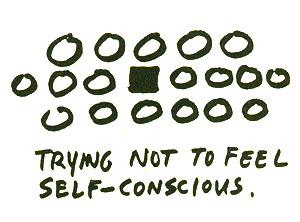Tricycle welcomes letters to the editor. Letters are subject to editing. Please send correspondence to:
Tricycle: The Buddhist Review
92 Vandam Street
New York, NY 10013
Fax: (212) 645-1493
editorial@tricycle.com
Willing and Able
Thanks for those two wonderful articles (Wallace and Patt) about presenting the dharma to a flagrantly consumerist culture. But I wonder if some lamas aren’t selling us a little short by assuming that nobody will come to basic teachings on lovingkindness and compassion. That is not always the case. On Memorial Day weekend, 550 people (250 more were wait-listed) came to hear Pema Chodron teach basic shamatha andbodhicitta practices at the Omega Institute in New York. The retreat was entitled “The Places That Scare You.” How’s that for an enticing appeal to the fast-trackers who want instant gratification? So perhaps it depends upon the teacher. And perhaps there are more of us out there than one might think who are ready to work with themselves.
Lelia Calder
Swarthmore, Pennsylvania
The Same Old Story
I wish to thank Tricycle for staying ahead of the curve with the thought-provoking article by David Patt on the “Commodification of Buddhism.” Your pitch-perfect balance of inspirational dharma and social issues continues to amaze me. There is, however, an aspect of Patt’s article that I find baffling. He speaks of Buddhism as addressing the fundamental question of happiness and uses the Second Noble Truth to conclude that “the cessation of desire, says the Buddha, leads to peace.” Patt then presents the current climate by stating that “consumerism is the exact opposite idea.” From here on, he wonders whether the West’s unique cultural values—in this case characterized by capitalism—put the Buddha’s teachings in danger of extinction.
It is easy to project that every society in the history of the world was less materialistic than our own. However, if in early Indian history the human mind was not subject to craving and desire in ways that caused extreme mental anguish and suffering, just as they do now, then why was the Buddha giving teachings on how to alleviate this problem?
We have come to know Shakyamuni Buddha as a supreme pragmatist. If the consumerism of which Patt speaks is so culture-bound, then what is the condition that the Buddha is addressing? And if that condition was so different from our own, then why do the teachings on the nature of desire make so much sense to us?
With regard to Patt’s descriptions of the selling of the dharma, the contemporary references to the American marketplace sound very convincing. Yet the greatest masters in Buddhism for hundreds and hundreds of years, from India to Japan, have been sounding off on the subject of corrupt gurus who are motivated by name and fame. In fact, once again, if the desire for “name and fame” were not a defilement that accompanied so-called traditional Buddhism, then why the admonitions against it? It seems to me that then, as now, it’s the same old story.
Hudson McGrath
E-mail

Transmuting Kidder Smith
It is both sad and ironic that one of Chogyam Trungpa Rinpoche’s “senior students”—Mr. Kidder Smith —presents a “personal growth” account of enlightened military practices he received. To compare what Chogyam Trungpa Rinpoche described as “an ideal vajra mandala” to Mr. Smith’s account as a “practice combin[ing] monasticism with a boy- or girl-scout outing” is frankly both juvenile and insulting from the point of view of anyone who was a serious participant.
It is curious that Mr. Smith does not mention the wealth of Vajrayana references which he must have encountered, such as the “Mogyal Pomra Encampment” or the source of inspiration for the encampment: Ling Gesar, the “non-dual warrior” of Tibet. MP Encampment generally begins with a lhasang (juniper smoke offering) invocation to Ling Gesar and his retinue of troops and maidens.
Mr. Smith states that “there was no real Tibetan precedent for these military forms” but rather that they were “Trungpa Rinpoche’s own response to the energy of this country.” Does Mr. Smith imagine that Chogyam Trungpa Rinpoche thought that neurotic dualistic reactions to cultural reality are unique to the U.S.A.—and that consequently he created something new? As we clearly recall, he often made reference to the fact that what he taught, and the methods he taught, were ancient. Mr. Smith says “no one was armed, and we didn’t even practice the martial arts.” He must have forgotten that Trungpa Rinpoche said we were all armed with the ultimate weapon of our minds.
Mr. Smith says that the military forms of his forefathers were purified and transformed, that his “aggression became superfluous, untenable—I had lost all inclination to it.” What about the aggressiveness of neutering your lama’s teachings—or degrading them with glib phraseology and self-indulgent, self-aggrandizing observations?
It was disappointing to read that Mr. Smith’s motivation in attending the encampment was to have a good time with friends outdoors and to satisfy his curiosity, rather than any sense of devotion to his teacher or to serve/experience his teacher’s mandala. Mr. Smith’s article is just another example of the diluting of Chogyam Trungpa Rinpoche’s teachings since his death in 1987. In our view, readers of Tricycle would be better served by authentic presentations of the principles and functions of enlightened military as presented by Chogyam Trungpa Rinpoche himself—or by senior students with a greater sense of dignity and humility.
Craig and Linda Donegan
Evanston, Illinois

I am writing to thank you for Kidder Smith’s article on the Buddhist military. For twenty-five years I have been surrounded by Buddhists, some of whom are former students of Trungpa Rinpoche’s, who have made fun of this army, or condemned it, or expressed nothing but horror at its existence. But in retrospect it is easy to see how the negativity about the Vajra guards gushed forth from a bleeding-heart, knee-jerk liberalism.
Perhaps Smith will not convince those who are committed to a negative view of Trungpa Rinpoche and the Shambhala community. For myself, the one question that lingers concerns the current state of this army in the absence of Trungpa’s creativity. It is hard to imagine that, without a mature master, it is being maintained with the wisdom and compassion that makes it a legitimate source of dharma teachings.
Sally Carlsen
E-mail
I read Kidder Smith’s article “Transmuting Blood and Guts” with incrementally decreasing interest. What initially promised to be a fascinating article soon betrayed itself as lacking any real detail or even moderate magazine-level scholarship. Tricycle is not usually lacking in this regard—however, this is not my main concern in writing.
In relation to Trungpa Rinpoche’s martial practices, Mr. Smith states, “there was no real Tibetan precedent for these military forms”—a vague, yet entirely erroneous statement. There exists a wealth of “enlightened military practices” based around Ling Gesar, the “enlightened warrior of Tibet.” The Tshogyal Nying-tig contains such practices—and they do not differ greatly from those that would appear to have been taught by Trungpa Rinpoche.
The Termas of Khying-chhen Aro Lingma contain similar practices based on a manifestation of Khandroma Yeshe Tshogyal in the form of a “horse-back warrior queen” who wields dominion over the Dorje Kun-jag-de, the minions of Kagu Kunpon Tshogyal Lekma’i, comprising four female warriors and four male.
Every yogi must own a set of vajra weapons, be it only in the form of a drawing. Many yogis such as Do Khyentse Yeshe Dorje and the father of Tharchin Rinpoche owned rifles in the context of their tantric vows.
I could supply a great deal of detail here simply from my own highly limited knowledge, but what I have supplied ought to be sufficient to show that there is a real and cogent Tibetan precedent for Trungpa Rinpoche’s military forms with regard to meditation.
Dr. C. Togden
Bromley, Kent, England
Kidder Smith responds:
My thanks to Ms. Carlsen for noting the potential neutralizing effects of the article—and for her penetrating question.
We are all in the debt of the Donegans and Dr. Togden. They proclaim the vajra truth of Trungpa Rinpoche’s military in a way that I could not do in this article. I was fighting on another front: those who regard my guru’s teachings as fascistic distortions of essential Buddhist training in lovingkindness. By supplying important missing pieces, the Donegans and Dr. Togden remind us how authentically these military teachings stand within the context of traditional Buddhism.
Still, it may not be necessary to protect the dharma by firing our most treasured weapons in its defense. As Trungpa Rinpoche might say, speaking now from within my heart center, “You troops still aren’t smiling. But you cared enough to write. And your devotion will carry you the rest of the way.

Efficient Teaching?
In the interview “Tibetan Buddhism in the West: Is It Working?”, B. Alan Wallace says, “Overall, I don’t think there is much efficiency in the way that teachings are taught or practiced in the West, even though we, being a consumer society, a business-oriented society, prioritize efficiency.” I agree, and this leads me to a proposal: the various Buddhist schools should present their teachings in textbooks.
A textbook presentation would be a scientific, objective exposition of a school’s teachings, clearly distinguishing empirical assertions (justifying them by common sense or scientific methods) and nonempirical assertions (justifying them by logical arguments from plausible premises). Its accounts of meditative techniques would clearly explain the evidence for their effectiveness. The exposition would include discussions of any open issues or controversies. It would have a bibliography of the principal texts of the school and secondary literature, a glossary, and an index.
It’s no accident that in any modern, industrialized society, scientific and technical knowledge is typically communicated using textbooks. The textbook format is designed to present knowledge clearly, logically, and efficiently. Buddhist textbooks would help make the teaching of Buddhism efficient. It would also increase accurate, rigorous knowledge of Buddhist teachings by communicating them in a typically Western style. It would also have two additional benefits: it might reduce Buddhist dilettantism, and it would force Buddhist teachers to assess their teachings in the light of modern science and Western philosophy.
Peter Eggenberger
Oakland, California

Academic Parry
I was sorry to see the hostile tone in Professor Gregory’s review of my book, The New Buddhism: The Western Transformation of an Ancient Tradition(Oxford, 2001), especially since his attacks focus on a couple of passing historical references and not what I would see as the heart of the book: the sociological analysis of why so many Westerners have joined new Buddhist groups. I know this is part of the academic game, but there are ways to couch criticism in more constructive terms.
His review does, however, point out at least one important difference between us. It is my firm conviction that religious experience is real, that it often touches a fundamental core of human existence, and that although it can only be expressed in socially conditioned ways and only recalled through various social filters, it is not at its root a socially conditioned experience. Professor Gregory takes particular umbrage at my statement that the core of Buddhism remains completely unchanged from the moment of Siddhartha Gautama’s great realization. To him, I have donned those fuzzy New Age glasses at the cost of my scholarly objectivity. While it is, of course, possible that Shakyamuni was a poser who never had such an experience or that there is no transcendent religious experience that is universal and timeless at all, the former seems highly unlikely, and the latter is directly connected to my own experience and that of literally dozens of people with whom I spoke in doing this research.
Professor Gregory also seemed highly offended by my comment that the new Buddhism’s most striking resemblance is to original Indian Buddhism, a statement he labels “preposterous” on the grounds that it was a movement of celibate renunciates, and that it would be hard to imagine an “ethos more different” from the new Buddhism. I disagree. The new Buddhists I studied were not the kind of self-indulgent New-Agers that Professor Gregory seems to imply. Although the monastic orientation of the original Buddhism was certainly an important difference (one which I explicitly mentioned in that passage), there are strong similarities in the fact that, unlike contemporary Asian Buddhism, the followers of original Buddhism were all converts, and from everything that remains from the historical record the central emphasis appears to have been upon the quest for liberation through individual effort, not ritual practice or the preservation of established organizational structures. Nonetheless,
I certainly agree with Professor Gregory that it is extremely difficult to be sure what Shakyamuni actually taught, and any such comparisons should be viewed in that light.
Professor William Coleman
California Polytechnic State University
San Luis Obispo, California